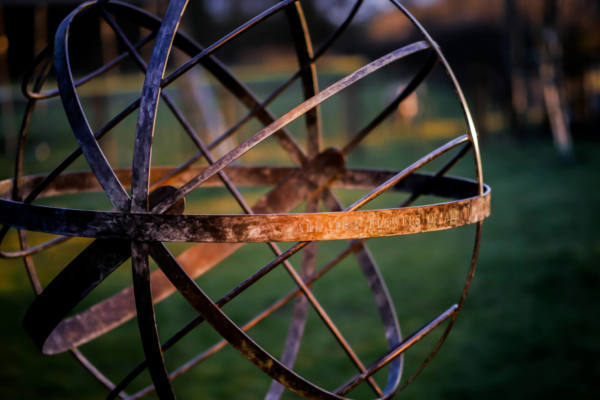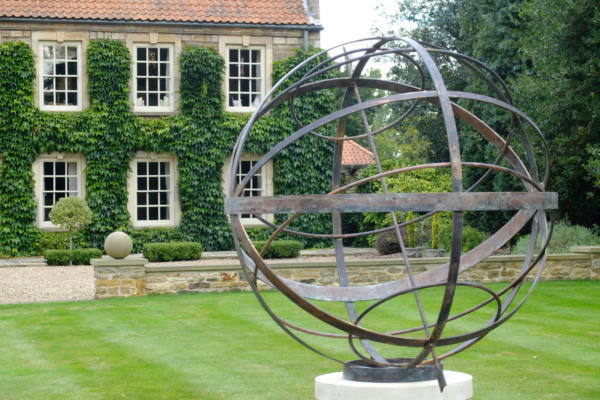Why would I choose a Bronze Armillary Sphere?
“It was through client demand that I began to work with bronze and the bronze armillary sphere has been enduringly popular throughout the time I have been making sundials, people just love the colour” says Capel.
Bronze, an alloy of copper and tin, holds a storied history in art and industry. Originating around 3300 BCE, its use burgeoned in ancient civilizations such as Mesopotamia, Egypt, and the Indus Valley, producing iconic artifacts and sculpture. Much of the tin used even by these ancient civilizations was mined and collected from Cornwall. The Bronze Age marked a transformative period as it enabled advanced weaponry, tools, and artistic expressions. Classical Greece elevated bronze casting to an art form, exemplified by the famed Riace Bronzes. Throughout history, bronze continued as a medium for monumental sculptures, witnessing revivals during the Renaissance and modern art movements. Its enduring allure stems from durability, malleability, and timeless aesthetic appeal.
One of the unique properties of a bronze armillary sphere is the patination that forms on the surface of the metal. This patination is known as verdigris. Verdigris is a common name for any of a variety of copper salts of acetic acid, which range in colour from green to a bluish-green. Verdigris has been used for artistic purposes from antiquity until the late 20th century and beyond, including in easel painting, sculpture and illumination of maps.
Your bronze armillary sphere will arrive with you a delightful blue green colour. The patination is a natural and organic process and each bronze armillary sphere will be unique in colouration. The traditional verdigris colour creates strong associative links with many icon sculptures and architectural details of the passed. You will find the verdigris colour blends in beautifully with all the colours of the garden, standing out against a dark evergreen while forming a striking contrast to floral pinks and purples.




















